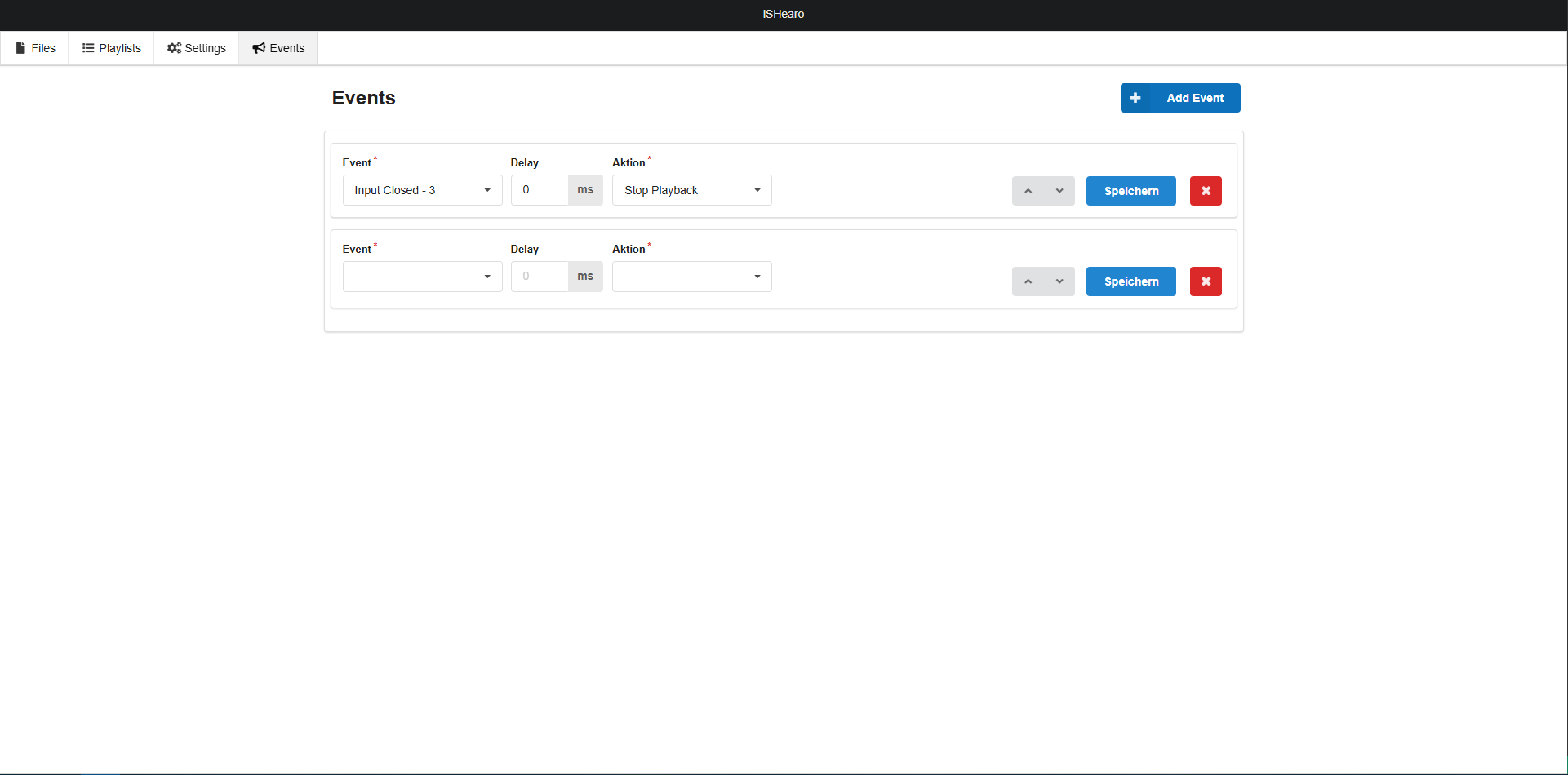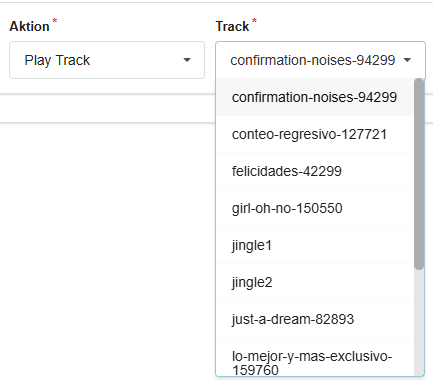Events

The so-called events can be used to trigger various functions via the connected hardware (e.g. iSHearo, buttons). If the corresponding hardware component is pressed, a trigger is activated in the software, which can be recognised and processed in the events.
Creating a new event
- To create a new event, click the Add Event button, the empty event then appears in the list below.
- The input fields marked with * are mandatory fields and must be filled in.
- The delay has a default value of 0 ms, this time specifies after how many milliseconds the event should start as soon as the trigger is activated. (Example: 5000ms = event starts 5 seconds after the trigger is activated. This has the advantage, for example, that the user has enough time to bring the iSHearo to their ear)
Input states
- You can open the list of possible triggers in the drop-down menu of an event.
- The trigger is given by the corresponding hardware component:
-
The numbers 1-4 stand for the respective GPIO pins of the hardware (see Settings, GPIO states).
-
A hardware component is connected to each pin (e.g. iS-Hearo or button)
-
When the iS-Hearo is removed from its mounting (magnet), the software receives an Input opened signal and triggers the specified event via the trigger.
-
Not every connected hardware component has the NC (normally closed) status - the information on the statuses should be found in the corresponding hardware documentation.
-
Accordingly, the input should be set correctly (Normally opened or normally closed).
Delay
- A delay is defined for the event (optional, default 0ms) so that the stored function is not called directly after the trigger is triggered.
- A delay should be used, for example, when playing a playlist or a track so that the user has time to bring the iS-Hearo to their ear.
- When using ‘Mute’ or ‘Unmute’ etc., no delay should be stored so that the user does not have to wait for the action.
Action
- When an event is triggered, it accesses the stored function.
The following functions are available to the user:
- Stop Playback = Stops the current playback (should always be set as the end event if an audio was played previously).
- Mute** = Mutes the audio.
- Unmute** = deactivate the mute function.
- Next Playlist = Plays the next playlist in the specified order.
- Next Title** = Plays the next track within the specified playlist (‘Play Playlist’ event required).
- Play Playlist** = Plays the playlist selected in the next step.
- Play Track** = Plays the track selected in the next step.
- Pause** = Pauses playback
- Resume** = Resumes playback after ‘Pause’.
- Volume Up = Increases the global volume.
- Volume Down = Decreases the global volume.
Play Playlist
- Shows all created playlists for selection.
- The playlist must be selected.
Play Track
- Shows all available tracks that have been uploaded via the "Files ’ tab, including jingles.
- The track to be played must be selected.

- The event is saved in the database with the Save button.
**From now on, the software reacts to the stored trigger.
Sorting
- The events can be reordered for personal interest, it has no effect on the triggering of actions!
- To change the order of the events, use the arrow keys again.
- Use the Save button to save the event in the database.
Deleting events
- If an existing event is to be deleted, this can be done on the right-hand side within the event block using the red X button.